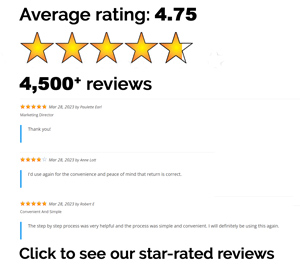The U.S. Census Bureau reported that in 2020, 37 million Americans lived in poverty. If you’re struggling financially, the government has assistance programs that can reduce the cost of food, health care and other basic needs. Each program has its own set of requirements and your citizenship, family size and income may be a factor. Here are some options available to low-income families.
Temporary Assistance for Needy Families (TANF)
The Temporary Assistance for Needy Families (TANF) program provides cash to families with minor children to help make ends meet. They also provide support services such as child care and job training. You may qualify for temporary assistance if you’re unemployed or your job doesn’t pay enough. The amount you’ll receive depends on where you live, but the average benefit for a single parent family of three is $498 per month. Eligible adults can only receive 60 months of benefits in their lifetime. As part of the requirements, you must get a job if you’re able to work. For more information, contact your local TANF program.
Supplemental Nutrition Assistance Program (SNAP)
Supplemental Nutrition Assistance Program (SNAP) helps families put healthy food on the table. If you’re eligible, you’ll automatically receive your benefits on Electronic Benefit Transfer (EBT) card every month. The EBT card works like a debit or credit card and can be used to buy groceries at authorized food stores and retailers. To qualify, the USDA says you must meet both the gross and net income limits.
SNAP Income Eligibility Limits – Oct. 1, 2021, through Sept. 30, 2022
| Family size | Gross monthly income (130 percent of poverty) | Net monthly income (100 percent of poverty) |
| 1 | $1,396 | $1,074 |
| 2 | $1,888 | $1,452 |
| 3 | $2,379 | $1,830 |
| 4 | $2,871 | $2,209 |
| 5 | $3,363 | $2,587 |
| 6 | $3,855 | $2,965 |
| 7 | $4,347 | $3,344 |
| 8 | $4,839 | $3,722 |
| Each additional member | +$492 | +$379 |
Note: SNAP gross limits are higher in Alaska and Hawaii.
You must contact your local SNAP office to apply.
Medicaid
Medicaid provides free or low-cost health coverage to low-income families and individuals such as children, pregnant women, the elderly, and people with disabilities. Some states have even expanded the program to include everyone below a certain income level. Medicaid coverage and costs are different in each state, but by federal law, they are required to cover inpatient and outpatient hospital services, physician services, laboratory and x-ray services, home health services and more. You can apply for Medicaid through the Health Insurance Marketplace or your local Medicaid office.
Children’s Health Insurance Program (CHIP)
The Children’s Health Insurance Program (CHIP) provides low-cost health coverage to children whose parents make too much money for Medicaid but not enough to afford private insurance. In some locations, pregnant women are also eligible for CHIP. The program benefits vary in each state, but they all must cover:
- Doctor visits
- Prescriptions
- Dental and vision care
- Inpatient and outpatient hospital care
- Laboratory and X-ray services
- Emergency services
While routine doctor and dental visits are free, other services may require a copay. Depending on where you live, you may also be charged a monthly premium. However, it will not be more than 5% of your family’s annual income. You can apply for CHIP benefits through the Health Insurance Marketplace.
Supplemental Security Income (SSI)
Supplemental Security Income (SSI) is a federal program designed to provide monthly payments to people who are blind, disabled or elderly (65 or older) and have limited income. For 2022, the basic monthly SSI payment is $841 for one person and $1,261 for a couple. But your payment may be reduced if you have other income. SSI recipients can usually qualify for SNAP and Medicaid too. If you think you’re eligible for SSI, you can apply on the Social Security Administration’s (SSA) website.




